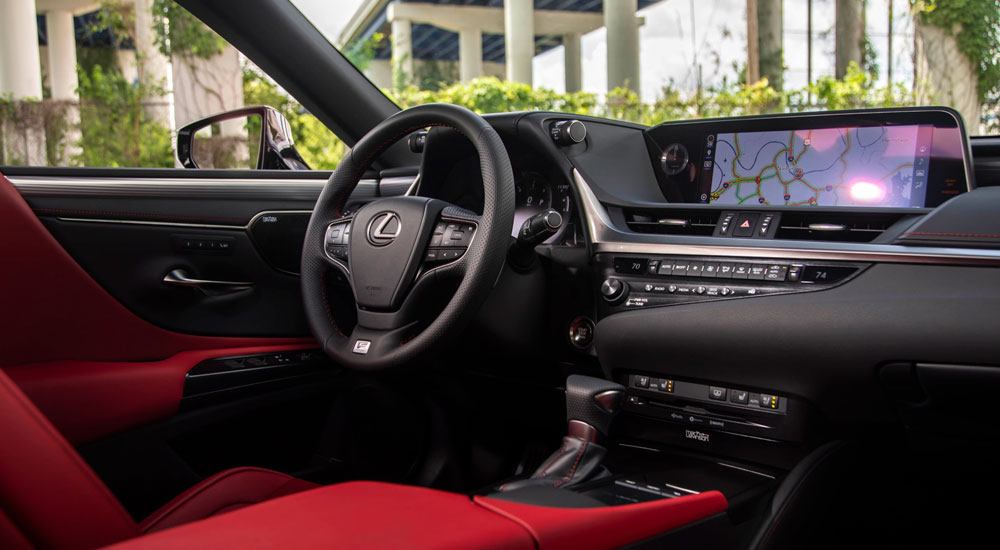VW Passat and Aerton are both transversely FWD layouts. The Audi A4 is a longitudinal FWD layout. Longitudinal FWD is by far more superior than transverse FWD layouts.
This is why I think the ES will fall short in handling when compared to A4 Quattro, 3, and C. Its transverse FWD layout is holding it back. Even if its fitted with AWD - a transverse AWD system isn't as a longitudinal AWD system.
You are beating a dead horse, even though I agree with you (except Audi).
First of all, we at LE are not the Lexus board.
Next, AWD will always be a compromise in ICEVs. Those compromises vanish with BEVs. Where car makers are wrong, really wrong about, and I wonder why you do not criticize that about BEVs, is that RWD BEVs are truly far better, cheaper, space efficient, and more simple and durable than FWD BEVs. Except Tesla and BMW i3, all other BEVs are FWD. With the torque they have, they are terrible to drive. With ESC, even more precisely programmable in BEVs than ICEVs, RWD will not be an issue for consumers. It is time for carmakers to stop transforming inefficient FWD ICEVs into BEVs.
Then, back to ICEVs, while FF-L is theoretically better than FF-T, it remains FF, and the difference between FF-L and FF-T is not a great as FR(-L) to FF-L.
We have already mentioned, that execution of a certain layout it more important than the selection of a certain layout. What good is it to select the right layout if it is not well implemented? Think of how IS XE20 was not praised initially for handling, although it was RWD.
I will repeat, that while FF-L might be better than FF-T, Audi is
not well executed from my experience, and thus not comparable to the two other German rivals.
While FF-L is indeed great in Subaru products as F4-L, and Subaru has successful sales, although they market their symmetrical AWD system and Flat4 engine as a value-added USP, they are not bought for these characteristics, but rather for the fact of having AWD and their (now past) perception of reliability. Yet, in consumers eyes the Outback does not hold a candle to the objectively inferior A6 Avant. More than that, Subaru's AWD system in becoming less mechanical and more FWD-biased, thus negating their layout advantage compared to F4-T competitors.
What you are asking is impossible, and more than that incomplete. Passenger vehicles are all about space utilization. Safety standards affect that even more; front overhangs have no function other than crash safety, but the take space, making a vehicle longer without adding passenger or cargo volume.
I have already mentioned, that to get the most out of a given footprint, while not compromising handling -- and that is being RWD -- cars should have a FR-L layout with V4 and V6 (both 90° angle). But this just cannot happen anymore. The reason why cars with V6 have a long hood, is because they all have derivatives with I4 or V8 which are longer, thus V6s are usually inefficient in space utilization, there is empty space.
Platform layout and engine configuration are highly interrelated. First, the more parts different engine configurations can share, the cheaper to develop and produce. Thus I4 and I6. 60° V6 has always been a stand alone engine. 90° V6 can be derived from a 90° V8 as is mostly the case today with non-Japanese makers, but these are big engines for expensive cars, and as the I4 was already established a 90° V4 could not be cost efficient anymore, and many carmakers had no 90° V8 to derive it from.
Notice, that because of I4, and car makers have no incentives to make RWD cars. Because the 1 Series will have no more I6, it will be FWD. Same case with Volvo, even though it was FWD with I6 in transverse layout (Daewoo Magnus/Chevrolet Evanda is another notable exception).
I don't want to tell to go buy the FF-L Audi A4 that you praise so much, but be prepared that what is praise about the 3 German is (unfortunately) not the reason why consumers buy them. They buy them primarily because of the badge, secondarily, because they 'feel' better, third because of market value, related to desirability due to the two first points. If the ES can give consumers a better 'feel' and consumers are aware of it through good sales promotion, it will be a success, regardless of what journalist praise about the Germans: handling and infotainment (iDrive, MMI, MBUX).
There is a big discrepancy between Journalists and Consumers. Consumers need Journalists to help with their buying decision, but Journalists cater to Enthusiasts, that only want Journalists to confirm their personal preferences. That is a big problem for the Consumer, and ultimately for the general Carmaker.

